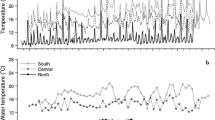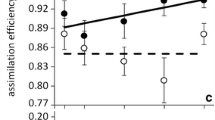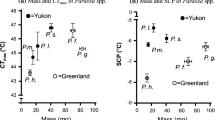Summary
Seothyra henscheli (Eresidae) is a burrowing spider that lives in the dune sea of the southern Namib Desert, Namibia. Prey capture by these spiders involves a foray from a cool subterranean retreat to the undersurface of a capture web that can be lethally hot. Striking, disentangling and retrieving prey from the capture web typically involves several short trips to the capture web, alternating with retreats to the cool burrow. It has been suggested that this behavior limits the increase of body temperature a spider must experience while working at the hot capture web. We used biophysical models in conjunction with direct observations of prey-capture behavior and distributions of sand temperature to estimate body temperatures experienced by S. henscheli during prey capture. In the circumstances we observed, only the relatively long post-strike retreat from the capture web is important in keeping spiders' body temperatures from exceeding their lethal limits. After the post-strike retreat, shuttling appreciably limits the increase in body temperature of small individuals, but may have little effect on body temperature increase in larger spiders.
Similar content being viewed by others
References
Almquist S (1970) Thermal tolerances and preferences of sand dune living spiders. Oikos 21:230–236
Bakken GS (1976) An improved method for determining thermal conductance and equilibrium body temperature with cooling curve experiments. J Therm Biol 1:169–175
Chappell MA, Bartholomew GA (1981) Activity and thermoregulation of the antelope ground squirrel Ammospermophilus leucurus in winter and summer. Physiol Zool 54:215–223
Cloudsley-Thompson JL (1962) Lethal temperatures of some desert arthropods and the mechanism of heat death. Entomol Exp Appl 5:270–280
Cloudsley-Thompson JL (1983) Desert adaptations in spiders. J Arid Environ 6:307–317
Dreisig H (1981) The rate of predation and its temperature dependence in a tiger beetle, Cicindela hybrida. Oikos 36:196–202
Dreisig H (1984) Control of body temperature in shuttling ectotherms. J Therm Biol 9:229–233
Dippenaar-Schoeman AS (1990) A revision of the African spider genus Seothyra Purcell (Araneae: Eresidae). Cimbebasia 12:135–160
Hamilton WJ (1973) Life's color code. McGraw-Hill, New York
Henschel JR, Lubin YD (1992) Environmental factors affecting the web and activity of a psammophilous spider in the Namib desert. J Arid Environ 22:173–189
Humphreys WF (1987) Behavioural temperature regulation. In: Nentwig W (ed) Ecophysiology of spiders. Springer, Berlin Heidelberg New York, pp 56–65
Louw GN, Seely MK (1982) Ecology of desert organisms. Longman, London
Lubin YD, Henschel JR (1990) Foraging at the thermal limit: burrowing spiders (Seothyra, Eresidae) in the Namib desert dunes. Oecologia 84:461–467
Norgaard E (1941) On the biology of Eresus niger Pet. (Aran.) Entomol Meddr 22:150–179
Riechert SE, Tracy CR (1975) Thermal balance and prey availability: Bases for a model relating web-site characteristics to spider reproductive success. Ecology 56:265–284
Robinson MH (1975) The evolution of predatory behaviour in araneid spiders. In: Baerends G, Manning C, Manning A (eds) Function and evolution of behaviour. Clarendon, Oxford, pp 292–312
Schultz TD, Hadley NF (1987) Microhabitat segregation and physiological differences in co-occurring tiger bettle species, Cicindela oregona and Cicindela tranquebarica. Oecologia 73:363–370
Turner JS (1987) On the transient temperatures of ectotherms. J Therm Biol 12:207–214
Author information
Authors and Affiliations
Additional information
Correspondence to: J.S. Turner at the present address
Rights and permissions
About this article
Cite this article
Scott Turner, J., Henschel, J.R. & Lubin, Y.D. Thermal constraints on prey-capture behavior of a burrowing spider in a hot environment. Behav Ecol Sociobiol 33, 35–43 (1993). https://doi.org/10.1007/BF00164344
Received:
Accepted:
Issue Date:
DOI: https://doi.org/10.1007/BF00164344




